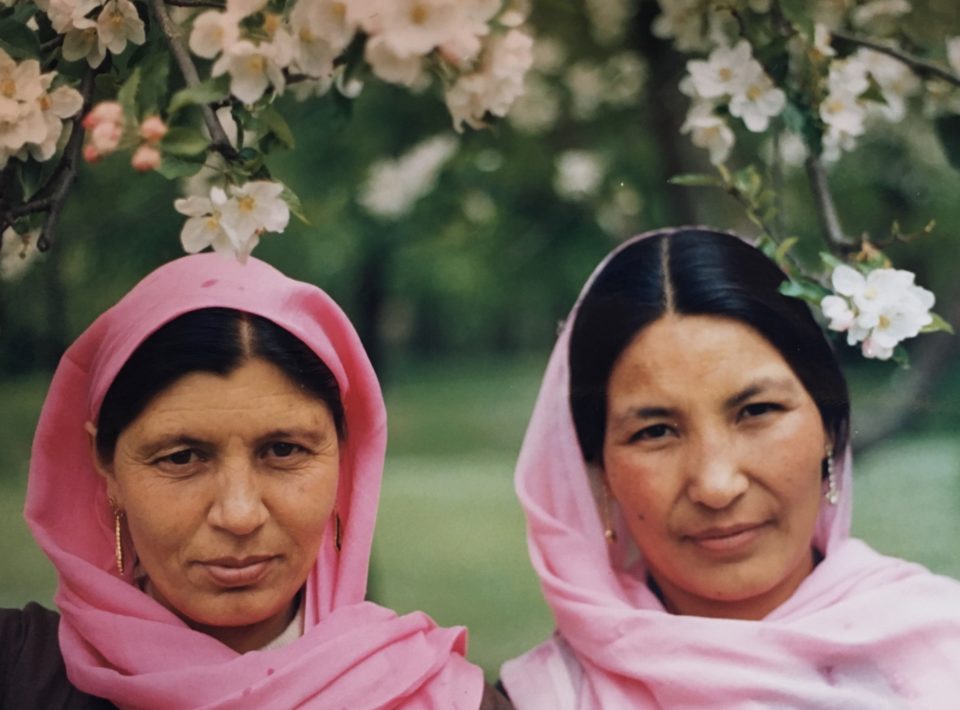Hear Leh Noise/Ambient Artist Ruhail Qaisar’s New Album ‘Fatima’ Ahead of CTM Festival Show
The nine-track record comes with a 48-page publication featuring “photographic documentation,” lyrics and more info
In the works for three years, Leh, Ladakh-origin artist Ruhail Qaisar’s album Fatima released on January 27th via the label Danse Noire, which is founded by Swiss artist Aisha Devi. Through a release of this scale – it’s available for digital download and with a limited edition 48-page print publication with photographic work and text in English and Urdu – Qaisar breaks past notions of being an underground artist.
Plus, he’s been invited to perform at Berlin’s CTM Festival this week (following a virtual performance in 2021), launching Fatima in a city that has for long supported experimental and boundary-pushing, left-field artists. Across nine tracks, Fatima draws from ambient, noise, power electronics and drone, among other sounds to put across stories that come from Qaisar’s lived experiences in Ladakh in the most disconcerting manner to shake one out of complacency for the happenings in the region.
Qaisar says it was “beautiful” to finally execute and release a project like Fatima, with the publication always being in mind as additional context for the audio. “I didn’t want to put out another release to go unnoticed, so I had to work within the parameters of a larger framework of ideas,” he says.
The album is Qaisar’s debut, one that comes after retiring projects like experimental electronic act SISTER (the moniker under which he released Ltalam EP in 2016) and being part of metal band Bonefvcker. Qaisar clarifies, however, that Ltalam was composed on impulse one morning at 4 AM and released later the same day. “I continued to only perform live on borrowed instruments after that release,” he adds.
It was only in 2019 that Qaisar says he could afford a soundcard and began learning to use production program Ableton. When he finally got around to composing Fatima, the artist says he was “tired of conventional instrumentation, composition, genre tropes, and the perils of muscle and memory.”
In an interview with Rolling Stone India, Qaisar talks more in detail about the themes that influenced Fatima and his performance at CTM Festival. Excerpts:
From Ltalam EP up until now, you’ve experimented a fair bit and got to do it through performances as well as recordings. What would you say (if anything) has chiefly changed in the way you approach sound now?
Residing in Ladakh during the pandemic actually inspired a lot of material and approach, it was completely composed entirely with free synth apps, found instruments, and a borrowed field recorder.
I now finally have a live setup after my recent residency with Pro Helvetia in Switzerland and am able to draw out my compositions better in a live setting with access to better equipment, the approach still from day one has been the same, to conjure audio hallucinations from derelict spaces, the function itself just has more favorable parameters presently.

On “Abandoned Hotels of Zangsti” you’re alluding to the tourism industry that’s often taken over Leh. There’s a certain cinematic side to it but also this sort of shuddering, chattering vocal sample. What can you tell me about the construction of this track?
I walk a lot when I am in Leh, and during the initial year of the pandemic when the entire tourism season, taking into context the amount of tourism in Ladakh since colonial times, through the official opening in ‘74 for the next two years, anomalously went cold-turkey.
I passed by a variety of properties, mainly in the area of Zangsti, Changspa, and Fort Road, old hotels built between the 70s-80s that were once the pride and glory of the locality, totally derelict. New up-coming post-2010 properties were halfway constructed, either due to the unavailability of construction workers or mortgage, or few presently completed high-grade luxurious hotels devoid of any staff or customers, windows covered in newspapers from 2003, collecting leaves, insects, and dust. All totems of three different waves of tourism in Ladakh were in perpetual stasis, haunted by the apparitions of the distant past and their lost futures.
I would choose to not disclose the source of this sample.
“Partition” seems to be most “lightest” song on Fatima, which is to say it doesn’t draw from noise so much. What is this track about thematically?
According to family history, my maternal great-grandmother migrated from the village of Astore in Gilgit Baltistan to Leh in 1947 on her own, by foot, with four young children, a perilous journey crossing harsh rivers and spiraling high-altitude mountain passes. The legend and the images were so powerful that I wanted to at least attempt a composition to tribute and illuminate it with sound.
You’re heading on to perform at CTM Festival, after being part of the virtual edition last year. How is prep for that going and what kind of performance is in store?`
I am looking forward to returning to Berlin and playing at CTM in the flesh this time, the preparations are well underway, including a special appearance by [Berlin-based producer] DIS FIG. A live performance harkening the sonic specters from the spinal landscape of high-altitude Himalayas,
What is coming up next through 2023?
New work has begun on a follow-up, compositions conjured next to Lake Geneva with [Swedish bassist and guitarist] Gottfrid Ahman and [Swiss-based drummer-producer] Michael Anklin.
Listen to ‘Fatima’ below.






